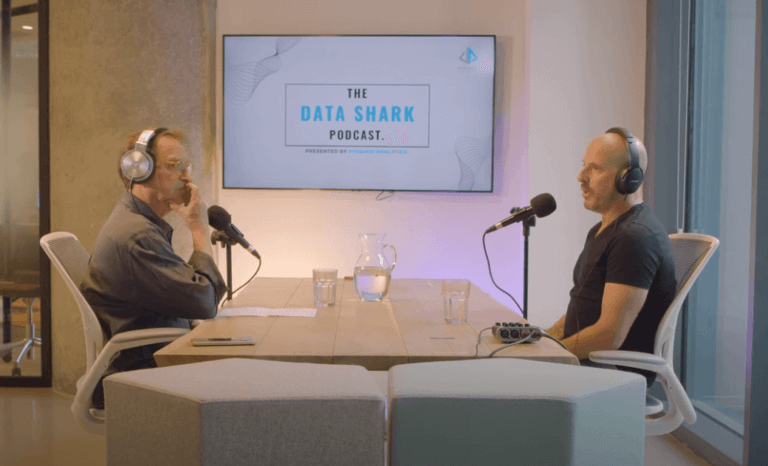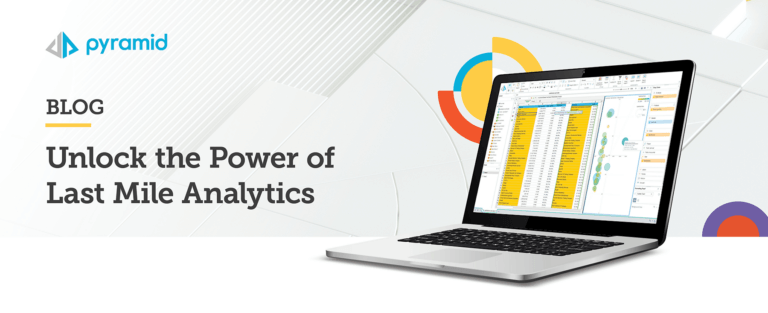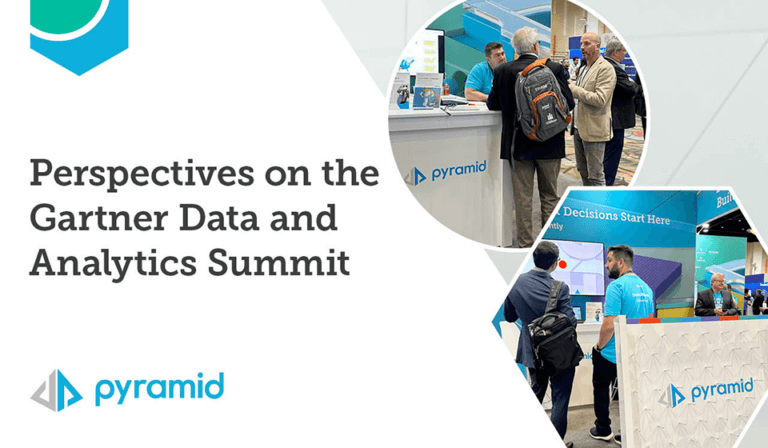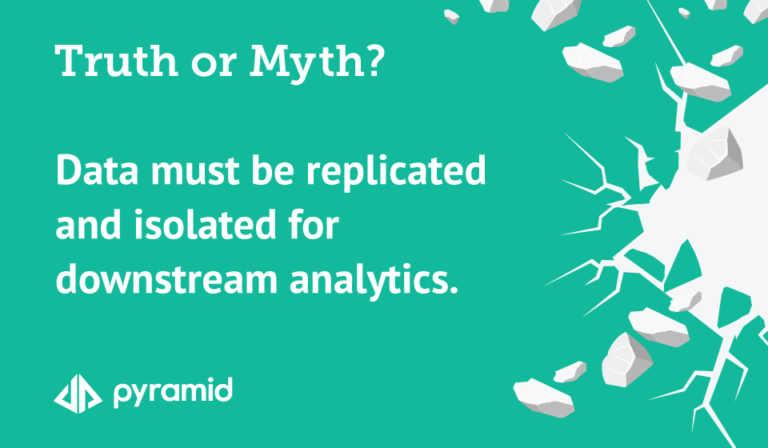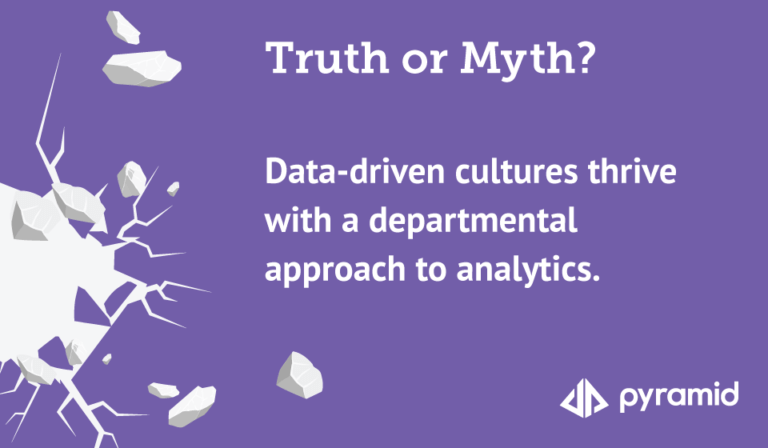A new business model to manage how business decisions are made
A business decision supply chain is a continuous process through which data owners (producers) can transform raw data into trusted and actionable business information for business users (consumers) to use to make better decisions. When integrated into a modern, self-service analytics platform, users across the organization can collaborate with data to experience transformative changes.
In this five-part series, we’ll explore how Pyramid Analytics aligns with a business decision supply chain framework to galvanize analytics for users across the enterprise.
Picture this all-too-familiar tragic scene: the executive team of a major global retailer—let’s call it X Sports—are gathered around that ugly brown wood veneer table, all fidgeting in their adjustable rolling office chairs as Ann-Marie, the head of sales, plows through her 30 PowerPoint slides to describe sales performance for the business last month. The slides are packed with data—both visuals and words.
Ann-Marie points to a KPI that shows that while her sales dropped, her business’s overall performance is better.
Ted from Accounting speaks up: “Those numbers don’t look right. Where did that data come from?”
Ann-Marie replies, “I used the extract I received from the operations team.”
“But which version of the extract? Did you use the latest one? And what are you using to calculate net margin?”
Gerard, the COO—normally cheerful and upbeat—sits with his arms crossed and his brow furrowed.
And the conversation continues like this . . . with each part of the business . . . for hours. What is supposed to be a meeting to drive the growth of the business is really an endless debate about the validity of data.
If you’ve seen this type of conflict at any level of your company, you’re not alone. Simply put, siloed analytics and misaligned teams gum up the works for everyone. However, data insights in the hands of the right people are a huge competitive advantage. Data can generate lasting value, but it needs a reliable system to accommodate the flow of data throughout the decision lifecycle: the digital equivalent of a mechanical flywheel to generate sustained momentum.
What is the “Business Decision Supply Chain”?
What if the everyone involved in decision making at X Sports collaborated with each other in a streamlined and efficient way, each connecting to the same sources of data without moving, downloading, or duplicating it. With this level of access, each business leader could come to their meeting with the same insights at hand. They could spend all their time making critical decisions, confident in the analytics they share.
Consider this alternative view of the business meeting we described above, this time without all the confusion and chaos.
Ann Marie is talking about store performance figures when her COO, Gerard, points to the Profits Versus Returns Trend chart on the screen. “Why is profit growth down, Ann-Marie,” he asks. “And more importantly, is there anything we can do about it?”
“I’m glad you asked that question, Gerard, because I saw those numbers yesterday. I had a hunch there was something going on with returns. Let me walk you through how I confirmed that.”
She opens up the Chat Bot on her screen and types in: “Focus on 2020.”
On screen, the Profit Versus Trend chart on the screen redraws itself with only the figures from 2020.
Next, she types “Show me the Top 3 manufacturers by Return dollars.”
Instantly, the chart reveals that there was a spike in returns for bike manufacturers in Q2. She adds “product” to the view to show that returns for bikes spiked during that time.
“Where is the data coming from,” asks Ted in Accounting.
Ann-Marie right clicks on the graphics and selects the “Information” view. “This is from our Snowflake server—looks like it was batched this morning. So these are our current numbers.”
Ted and Gerard nod, trusting the insight and ready to take action.
This scenario is a study in contrast. Instead of data being a source of contention, it’s driving meaningful collaboration.
How a Business Decision Supply Chain can drive decisions
Successfully connecting data owners and business users in this way is a crucial component of the “business decision supply chain”: a sequence of processes by which analytics producers turn raw data into trusted and actionable business information. It includes a variety of distribution channels by which producers collaborate with analytics consumers—to deliver data insights to help make better decisions and guide the work they do for the business.
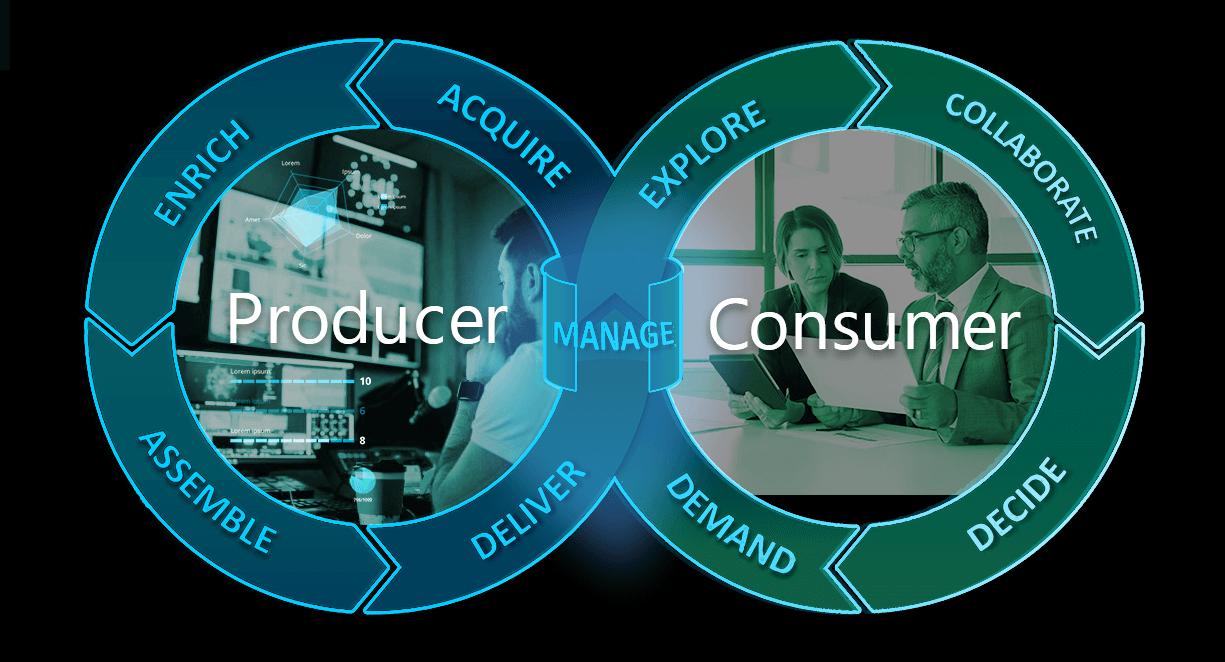
The business decisions supply chain illustrates a process where Consumers (those who need data to make decisions) and Producers (those who prepare data for Consumers) work together in a continuous cycle.
Consumers are every member of a business organization who need to use data in some way in their role. This is everyone from an executive to a general manager or line worker. Producers, on the other hand, use their knowledge of raw data assets to enrich it and make it available to the wide audience of consumers who need it.
Increasingly, people are playing both roles as knowledge of data increases, and technology enables the ability to make data more accessible while maintaining security and compliance. It’s by facilitating a collaborative relationship between the two parties that companies can begin making decisions based on data-based insight rather than gut feeling alone.
How can we create this ideal process of turning raw data into actionable business value via a self-propelling decision supply chain? In our next blog post, we’ll introduce you to the Business Decision Supply Chain and take a closer look at how the right digital platform enables both analytics producers and consumers to manage their relationship successfully—optimizing costs, reducing time to decisions, and improving change management in the process.
This post is a part of our five-part series on the Business Decision Supply Chain. Revisit any of the other posts to learn more:






